The Samsung Galaxy S9 and S9+ Review: Exynos and Snapdragon at 960fps
by Andrei Frumusanu on March 26, 2018 10:00 AM ESTCamera - Low Light Evaluation
We move onto low light shots. This is the part where we have large expectations of the S9 as the new wider aperture and multi-frame noise reduction processing promise great improvements in quality.
[ Galaxy S9 ] - [ Galaxy S8 ] - [ Galaxy S7 ]
[ Pixel 2 XL ] - [ Pixel XL ] - [ P10 ]
[ Mate 9 ] - [ Mate 10 ] - [ G6 ] - [ V30 ]
[ iPhone 7 ] - [ iPhone 8 ] - [ iPhone 8 Plus ] - [ iPhone X ]
In this scene again to give the best apples-to-apples comparison between the devices I shot the samples at different exposure modes, focusing on different parts of the pictures.
The scene was naturally very dark and the Galaxy S9 in auto mode did a good representation of this. However this is still too dark for actual picture usages on a monitor so focusing on a darker part of the scene brought up the exposure and details in the darkness. Against the S8 the S9 gains details in the shadows but otherwise the two phones post very similar processing with the S9 being in the lead.
In terms of the competition the Pixel phones are clearly the devices to beat here. Google is able to retain a lot more details in textures as the phones use far less heavy processing. This results in a noisier picture than the Galaxy S9 but I think it’s overall better because of the detail retention. The iPhone 8 as well uses less processing and sharpening, able to retain more of the natural textures of the scene, again, at the cost of higher noise.
Which phone is best will come down to preference as the different phones have different compromises. The S9 is sharp and bright with little noise, but loses on texture detail. The Pixels and iPhones are noisier but retain better the textures of the scene.
[ Galaxy S9 ] - [ Galaxy S8 ] - [ Galaxy S7 ] - [ Pixel 2 XL ]
[ Pixel XL ] - [ P10 ] - [ Mate 9 ] - [ Mate 10 ] - [ G6 ]
[ V30 ] - [ iPhone 7 ] - [ iPhone 8 ] - [ iPhone 8 Plus ] - [ iPhone X ]
In the second low-light scene we have another challenging scenario with a lot of dark area and a few highlights.
Here the Galaxy S9 dominates the competition as it produces by far the best results. The processing style is similar to the S8 however the S9 just produces more detail and less noise. Google’s Pixel devices did not do well at all in this shot and the result is a fuzzy noise picture even though light capture and dynamic range seems adequate. The Pixel phones did manage the best colour representation of the sodium lamps, although it doesn’t rescue the end result. The new iPhones do a good job, but it’s not enough against the Galaxy S9 or even S8.
The best contender against the S9 here is in my opinion the V30 as although it produces less light than the S9, it manages to retain a great amount of detail on the bridge, at least compared to all other phones. The V30 here also sees a comparison shot with the new “Bright Mode” that was introduced with a firmware update following the MWC announcement of the V30s. This allows for 2x2 pixel binning and increased light capture, but naturally with a resulting picture which has only 1/4th of the pixels and thus much less detail.
[ Galaxy S9 ] - [ Galaxy S8 ] - [ Galaxy S7 ] - [ Pixel 2 XL ]
[ Pixel XL ] - [ P10 ] - [ Mate 9 ]
[ Mate 10 ] - [ G6 ] - [ V30 ]
[ iPhone 7 ] - [ iPhone 8 ] - [ iPhone 8 Plus ] - [ iPhone X ]
The next scenic scene has a lot more lights scattered through the frame. The Galaxy S9 again noticeably improves the sharpness over the Galaxy S8 while retaining the same colour tones and overall processing. The Pixels didn’t do well in terms of colour balance and also have less detail than the S9 and iPhones. The new iPhones are indeed the contenders for second spot here as the iPhone 8’s and X beat the Galaxy S8 in terms of detail, but fall short of the S9’s capabilities. The V30 also did extremely well in preserving detail and noise, however like in the last scenario comes at the prices of darker shadows with less features.
[ Galaxy S9 ] - [ Galaxy S8 ] - [ Galaxy S7 ] - [ Pixel 2 XL ]
[ Pixel XL ] - [ P10 ] - [ Mate 9 ]
[ Mate 10 ] - [ G6 ] - [ V30 ]
[ iPhone 7 ] - [ iPhone 8 ] - [ iPhone 8 Plus ] - [ iPhone X ]
This scene with a lit statue even when looking close is hard to differentiate between the S9 and S8. The S9 does an ever so slightly brighter image and better detail retention, but the differences aren’t that big. The Pixel phones and the Pixel 2 in particular produce a much brighter image with the larger dynamic range, however this comes at a cost of lack of sharpness and more noise. The V30 follows the S9 in terms of overall exposure and in terms of details it seems a tie between the more processed S9 and the softer, but higher resolution of the V30. The S9 does better in the highlights. The iPhones do a brighter picture than the S9, but lose in terms of details and noise.
[ Galaxy S9 ] - [ Galaxy S8 ] - [ Galaxy S7 ] - [ Pixel 2 XL ]
[ Pixel XL ] - [ P10 ] - [ Mate 9 ]
[ Mate 10 ] - [ G6 ] - [ V30 ]
[ iPhone 7 ] - [ iPhone 8 ] - [ iPhone 8 Plus ] - [ iPhone X ]
The next scene follows the characteristics of the last one. The Galaxy S9 does ever so slightly better than the S8. The Pixels again retain more light but with a resulting fuzzy picture. The V30 and new iPhones are the real contenders to the Galaxy S9 with the V30 taking second place to the S9.
[ Galaxy S9 ] - [ Galaxy S8 ]
[ Pixel 2 XL ] - [ Pixel XL ] - [ P10 ] - [ Mate 9 ]
[ Mate 10 ] - [ G6 ] - [ V30 ]
[ iPhone 7 ] - [ iPhone 8 ] - [ iPhone 8 Plus ] - [ iPhone X ]
This scene is a lot brighter than the previous scenarios due to the street lighting, so the quality of the results should mostly fall onto the characteristics of the camera processing.
Between the Galaxy S9 and S8 we see the same overall picture exposure level. The S9 is able to achieve a higher dynamic range and less blown-out highlights of the street lamps thanks to its wider aperture and quicker exposure time, compared to the S8. While at first glance the pictures are similar, when looking at the details it seems as though the S9 regresses on the details compared to the S8. This is especially visible in the foreground objects such as the pavement or the shop front on the left. This loss of detail is less pronounced further in the middle of the image and down the street so I think what’s happening is that the S9’s shallower depth-of-field because of the wider aperture is working against its favour in this shot.
The Pixels again don’t retain enough detail so can’t compete against the S9 and S8. The iPhones showcase an extremely close exposure to Samsung’s phones. Apple’s devices are very close to the S9 in the foreground but lose out in detail further down when the S9 is in its optimal focal plane. The V30 produces an overall darker image, but this helps with preserving the highlights. In terms of detail it’s relatively even to the S9 but it depends on which parts of the picture are being compared as they have different exposures.
[ Galaxy S9 ] - [ Galaxy S8 ] - [ Galaxy S7 ]
[ Pixel 2 XL ] - [ Pixel XL ] - [ P10 ] - [ Mate 9 ]
[ Mate 10 ] - [ G6 ] - [ V30 ]
[ iPhone 7 ] - [ iPhone 8 ] - [ iPhone 8 Plus ] - [ iPhone X ]
The last scene is about sheer light capture and to see who resolves best the shadowy-details. In this scene the Galaxy S9 makes full use of its wider aperture and provides a lot more clarity and less noise than the S8. The Pixels do a gain a much better job at capturing the correct colour balance of the sodium lamps but, but again can’t compete in terms of detail. The V30 continues its trend of producing darker images which helps keep down noise and still retain a respectable amount of detail, however just can’t bring out features in the shadows. This leaves the new iPhones as the only contenders. Apple, similarly to Google, does a better job than Samsung in terms of colour temperature. When it comes to detail, the iPhone 8’s and X are more on the level of the Galaxy S8 and the S9 retains its lead.
Overall the Galaxy S9 provided the best low-light shots among the test smartphones through its ability to retain more detail. In dark scenes the S9 doesn’t have the same consistency issues that we saw in the day-light shots and I found the S9, similarly to its predecessors, to provide a good a repeatable experience. The advantages over the S8 will depend on lightning and scenery. In the worst low-light scenarios the S9 will hold a good lead over the S8, but in other scenarios when there’s a bit more light the differences are less pronounced. There’s some rare cases where the S9 could do worse than the S8 and that’s simply due to the nature of the optics and the shallower depth of field of the F/1.5 lens.
In terms of competition, I think Apple’s new iPhones are overall the most competitive against the S9 in low-light and showed the best balance across the shots. Google had the best low-light colour balance, but in some scenes just had too much noise resulting in fuzzy images. Huawei in general had a tough time competing and their monochrome sensor solution just didn’t work out. LG’s phones were very good as well however Samsung edged them in in detail.


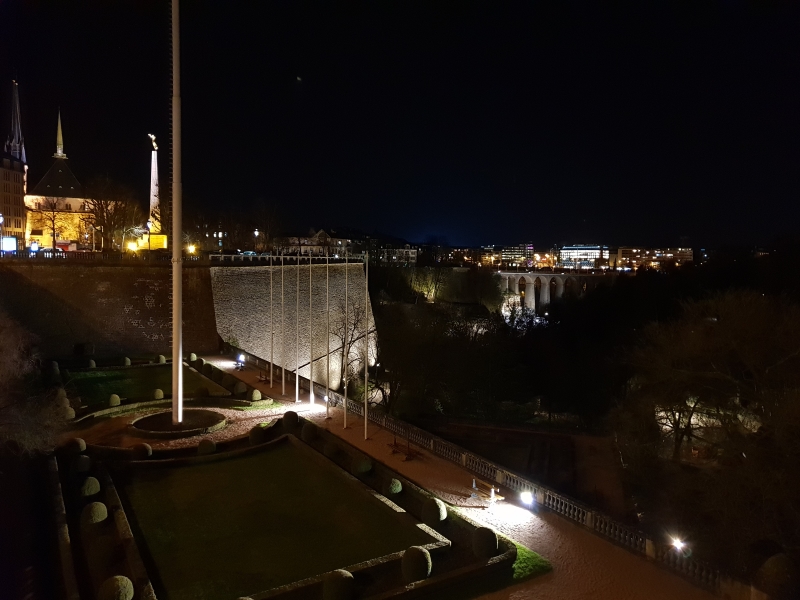




















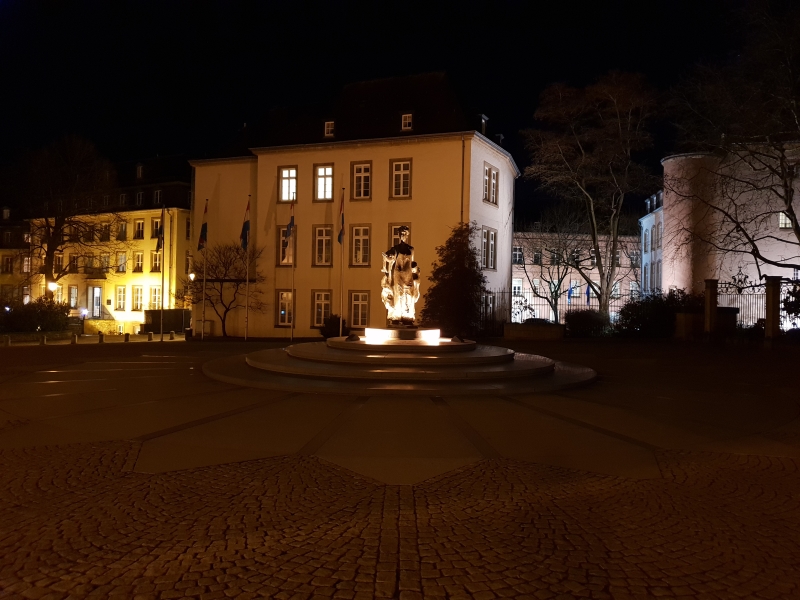






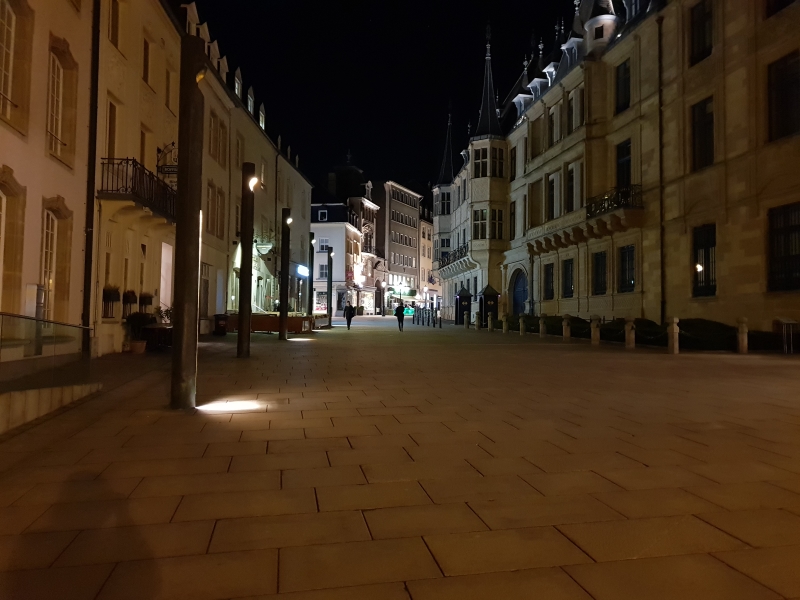






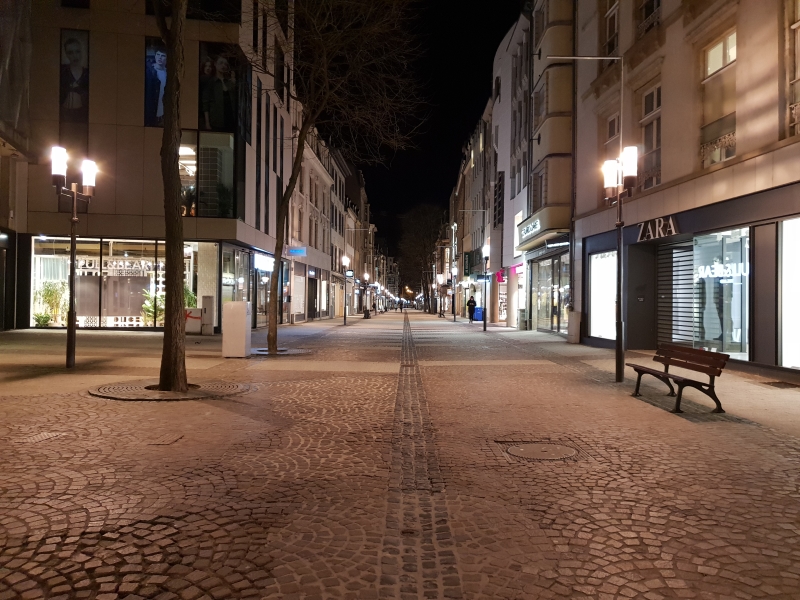






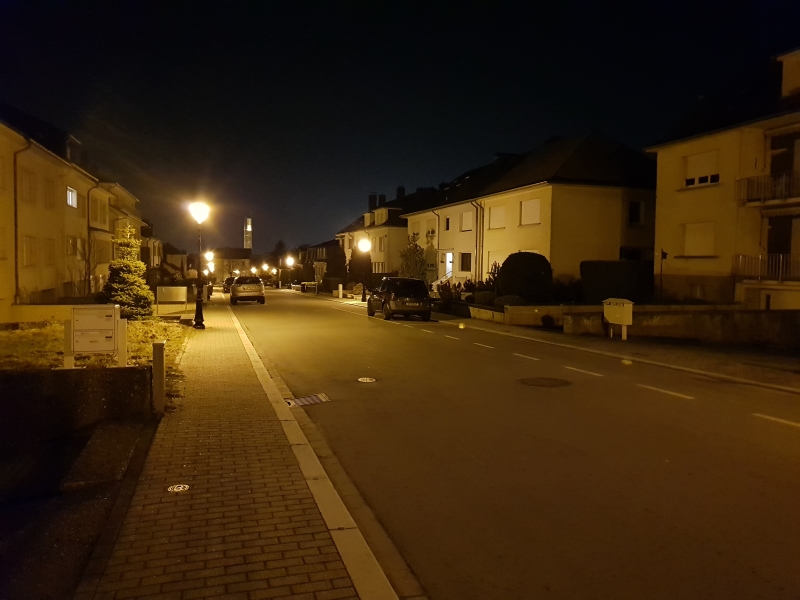














190 Comments
View All Comments
Andrei Frumusanu - Monday, March 26, 2018 - link
I literally uploaded a 4K60 video on the S845 S9+. They always had it.https://youtu.be/9g88TIi-p2U
N Zaljov - Monday, March 26, 2018 - link
This article, as always, is some top-quality stuff. Really enjoyed reading it, Andrei!As for the CPU: Ah! Hotplugging! We finally meet again after all these years! How's it going ever since you've been banned from this planet? ;-)
Honestsly: I don't think that a company like S.LSI would seriously start fiddling around with deprecated mechanics like hot-plugging and slow asf DVFS scheduler settings, if there wouldn't be a major architectural/implementational flaw within the M3 cores.
This might sound like a far-flung theory, but could it be possible that there might be something wrong with the way how the M3 cores handle power-gating in a way that it just takes the CPU way too long to "warm up" cold blocks (like Register files, INT- & FP-Units etc.) that aren't utilized, which kind of translates into these terrible response times? While this might only explain the poor DVFS implementation, I don’t really find a reason why „hot-plugging“ should be the way to go for any sane semiconductor engineer or BSP developer.
Yes: It’s easier to implement and it costs less transistors (and wiring as well), but with modern process nodes, the added transistor budget simply wouldn’t even matter when you compare it with the huge amount of logic that’s there. In fact, I wouldn’t be too surprised if the hardware actually supports a more fine-grained control (with stuff like WFI for instance...), but at some point the BSP developers simply said „well, this stuff has already been working for us in the 5410 and 5420, so let’s go!“. Duh.
On the GPU side of things though, it doesn't look as bad as I initially suspected: S.LSI greatly increased their effort into improving perf/w of their Bifrost implementation, a big differentiationpoint between HiSilicon's last two generations and the appalling heap of junk of a GPU implementation in form of E8995's G71MP20.
Andrei Frumusanu - Monday, March 26, 2018 - link
> if the hardware actually supports a more fine-grained control (with stuff like WFI for instance...)WFI, core power down and cluster power down all work perfectly as intended and are being used. If they wouldn't be then this thing would melt. They use the hot-plugging just to force the scheduler. There's also no way to know which parts are of the S.LSI BSP and which parts are from the mobile division. I'm very sure all of this is likely mobile division additions however it can't be confirmed as they both use the same copyright name (Samsung Electronics) in the source files.
N Zaljov - Monday, March 26, 2018 - link
Thanks for clarifying. My apologies, I skipped the part that mentions "...to force thread migrations between the cores...".Another question: What software build is your S9 running on? The last update (afaik Build RC5) supposedly fixed some performance related issues and I was wondering, if they changed the bias of their governor (or at least tried it).
Andrei Frumusanu - Monday, March 26, 2018 - link
The review was done on ARC5.Quantumz0d - Wednesday, March 28, 2018 - link
Thanks for this Andrei, Also this article is pure gold !!Loved every bit of it from the Architecture to the benches, explanation, the wording, fantastic work there sir.
That Googles ridiculous decision to block Accessibility & the most essential 3.5mm jack mention and honest true facts about it in simplistic way yet hitting the bullseye, and the flow of the article is just marvellous art. Keep it up !!
One more thing I would suggest is, you might consider teaming up with Supercurio from XDA who built the Voodoo sound for Wolfson chips for Audio Analysis would be a great addition !!
Thank you again ! Looking forward for more.
tuxRoller - Monday, March 26, 2018 - link
The kernel has recently (https://lwn.net/Articles/737157/) completed a, nearly complete, rewrite of the hot-plugging core. This has made it both much faster and more reliable. So, it's very far from deprecated (though I won't speak to the way Samsung is using it here).Quantumz0d - Wednesday, March 28, 2018 - link
Exactly what I thought. After the SD810 the Hotplugging is very bad and inefficient. I wasn't surprised when the initial fantastic analysis was done by Andrei, but its really bad about the Battery life regression. Also I don't get this hype around the A series chips after that massive battery fiasco, they tune them so badly and look at the iPhone internals they barely have metal plate contact for heat transfer. Yeah I agree on the GPU part too surprised to see this. But I think Samsung wanted to have similar performance between the devices and down tuned the CPU in one and GPU in another...pure speculation.Apple manages to cheat always and damn all these idiotic sites who only show GB and say here's the Exynos and all. I didn't like how Samsung advertised the new SoC chip likes of Apple going for peak and not sustained.
I think that SD85x might have full custom cores like the OG Kryo from 820, I wish that to happen. Feels great to see how Adreno crushes the A11.
zer0hour - Monday, March 26, 2018 - link
Superb article, certainly of quality that lives up to the Anandtech name. I've been waiting for details of the E9810 S9 for ages, and this article is really the only one that explores the reasons for its weird real world vs synthetic performance.Speedfriend - Monday, March 26, 2018 - link
After seeing the S9 initial performance impressions and being in the UK, I decided to go for a pixel 2 XL for myself and an S8 to replace my gfs iPhone 6S. Very happy with both decisions, the pixel 2 XL is so fast and the S8 was a crazy deal.It is a real pity that performance and battery life are so hampered in the s9810 versions as I have loved my last few Samsungs. But if Google makes another good pixel this year, I can't see myself going back.